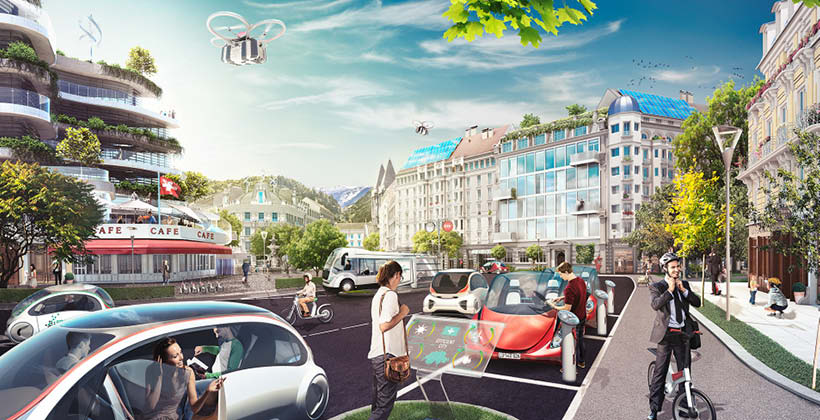The Evolution of Parking Technology
Finding a parking spot in a densely populated city can be quite stressful. Driving around, watching for parking enforcement officers, and racing against the clock while being chased by other impatient drivers is far from enjoyable. As parking technologies evolve, they aim to mitigate these issues.
The lack of automated parking systems poses significant challenges for drivers and governments alike, including increased congestion, environmental sustainability concerns, poor space management, and inaccessibility of service in general. Additionally, the lack of automation leads to fraud and asymmetry of information for drivers, complicating the parking process and reducing overall city efficiency.
Development of Parking Technology
The concept of parking has evolved significantly since the early 1900s when "to park" defined vehicle arrangement methods in the US rather than what we are used to seeing right now.
Over the years, parking technology has advanced from manual barriers, which were costly and prone to human error, to automated barriers and parkometers which, while reducing some challenges, introduced new ones such as the free rider problem and lack of real-time space availability information.
The latest in this evolution includes sensor-based systems and mobile app integrations that facilitate open-loop payments and provide dynamic information about available spaces. According to a research data by precedenceresearch, the current market share of smart parking is spread with the leading position taken by the US at 36%, followed by Europe at 31%, Asia Pacific at 25%, Latin America at 5%, and the MEA region at 3%.
 Javier Rios, Client Director AFC at O-CITY: "More and more cities follow the digitalisation path, opting for open-loop account-based fare collection solutions as the most convenient and future-proven technology. This is also supported in the recent reports that show that the growth of digitalisation in parking will hit 182% in 2024 in the congested cities."
Javier Rios, Client Director AFC at O-CITY: "More and more cities follow the digitalisation path, opting for open-loop account-based fare collection solutions as the most convenient and future-proven technology. This is also supported in the recent reports that show that the growth of digitalisation in parking will hit 182% in 2024 in the congested cities."
Why Open-Loop is the best technology for Parking Automation
Migrating the parking service to open-loop systems enables the connecting parking to the city digital ecosystem and bridging of data across various modes of transport, from cars and bikes to public transport by unifying the payment methods (QR, card, NFC, even biometry) for the commuters and drivers as well as unifying the collected payments and non-payments data onto a centralised cloud-based server for later swift processing.
The roll out of the account-based system, allows introduction of dedicated mobile applications for all stakeholders, that uses data stored on the servers to find a perfect free spot on the street, or prolong the parking place as well as acts as a digital wallet. Parking providers can significantly enhance convenience for both drivers and city inspectors.
Digitalisation enhances traveller experience as well by improving the ease of finding parking spots in unfamiliar cities and integrates seamlessly into the digital ecosystems of modern urban environments, pushing forward the cashless agenda.
For parking service operators and municipalities, automating parking spaces not only streamlines operations but also offers significant monetary benefits. It reduces the complexities and costs associated with cash handling and processing. This digitisation allows for the easy adoption of diverse payment methods and facilitates the implementation of dynamic pricing strategies. Operators can customise prices based on various factors such as zone or city district, membership status, vehicle class, and temporal elements like date, time, season, or specific events. Additionally, pricing can be tailored to different driver profiles or sales channels, enabling more precise market segmentation and potentially increasing revenue streams.
Cities worldwide are embracing advanced parking solutions. In San Francisco for example, a smart parking initiative significantly eased traffic; by installing over seven thousand sensors and harnessing parking data, it reduced traffic related to parking searches by 43% and overall traffic in the area by 30%. This success mirrors efforts in Asia and Europe, where similar technological advancements are being implemented to address long standing parking challenges.
Conclusion
The task of modernisation is not impossible. Following four consecutive steps, more and more cities step-up on this path. The global market for smart parking systems was valued at USD 7.49 billion in 2023 and is projected to surge to around USD 55.62 billion by 2033. The cameras and licence plate recognition segment, in particular, is expected to grow during the next 10 years, highlighting the increasing reliance on sophisticated technology to streamline parking experiences worldwide. The rise of mobile app parking services also reflects a significant shift towards more integrated, user-friendly solutions in urban mobility.



